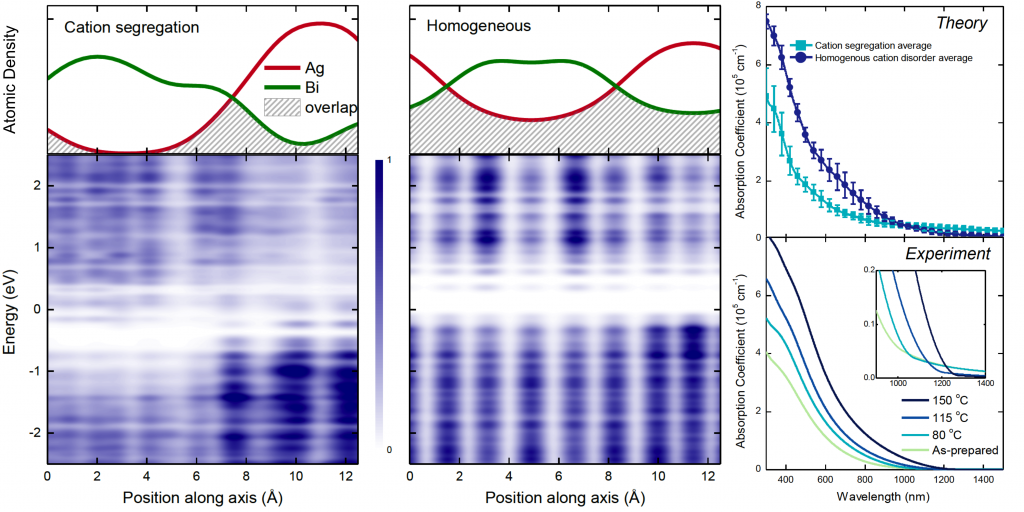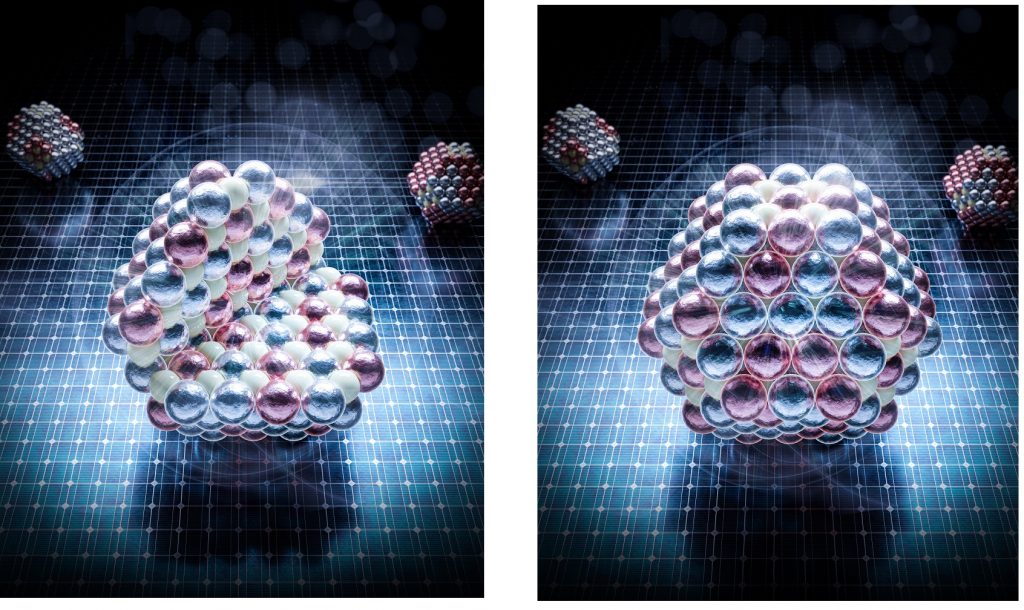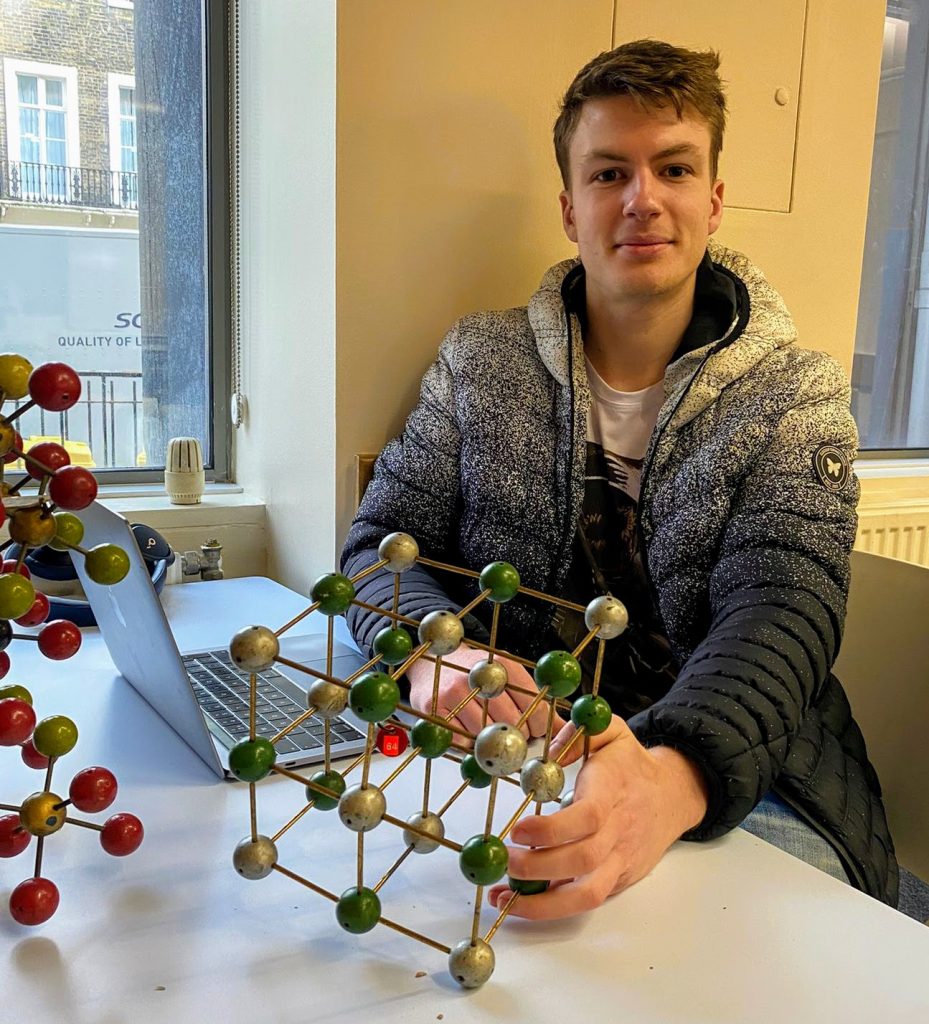Smashing the world record efficiency for an emerging solar cell material; AgBiS2
Seán Kavanagh
In a close collaboration with experimental colleagues from ICFO Barcelona, 3rd year student Séan Kavanagh and his research group managed to smash the world record efficiency for an emerging solar cell material; AgBiS2, from a previous record of 6% to over 9%. This work was accepted for publication in Nature Photonics, and was chosen to be highlighted as the ‘hero image’ for the March issue. Seán is the co first-author on the paper.
This exceptional performance was enabled by the team’s initial theoretical modelling of this material, which demonstrated that engineering the cation distribution and disorder in this emerging ternary chalcogenide absorber can lead to major absorption enhancement. With this knowledge, they optimised the synthesis and treatment conditions, allowing their experimental colleagues to fabricate ultrathin solar devices which broke the world record with a relative increase of nearly 50% from the previous record. In fact, in doing so, they produced a material with the highest absorption coefficient of any solar cell material currently being studied.
Another major point for the team’s work, is that this material is by far the highest performing bismuth-based solar material – a class of candidate materials which have thus far failed to reach their true potential (Refs: https://iopscience.iop.org/article/10.1088/1361-6528/abcf6d, https://iopscience.iop.org/article/10.1088/2515-7655/abebca).



Joshua BaileyBeing part of the CDT-ACM was an all-round fantastic experience; I not only received great training in a range of advanced characterisation techniques, but I also made strong links with industry and strong bonds with my cohort which have both led to fruitful collaborations.
![CDT Advanced Materials Characterisation [logo]](https://www.cdt-acm.org/wp-content/themes/cdt-acm-theme/assets/img/cdt-acm-logo-white.svg)